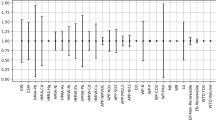Abstract
Intention, Goal, Scope, Background
BASF has developed the eco-efficiency analysis tool to address not only strategic issues but also issues posed by the marketplace, politics and research. The goal was to develop a tool for supporting decision-making processes, which is useful for many of applications in the Chemical and other industries. A part of the eco-efficiency analysis involves the evaluation of the toxicity and the eco-toxicity potential.
Objectives
Many life cycle analyses do not include an assessment of the toxicity potential nor the eco-toxicity potential. However, in order to arrive at a comprehensive assessment of products and processes, it is often the eco-toxicity potential, which constitutes an important factor with regard to the evaluation of sustainability. The cradle-to-grave approach is also important for this calculation and will be done based on a database that will be discussed also in this paper.
Methods
The method used for the determination of the eco-toxicity potential follows the basic rules of the European Union Risk Ranking System (EURAM). The other criteria of the ecological fingerprint are combined with the economical results in the eco-efficiency portfolio.
Results and Discussion
The results of the studies are shown in a simple diagram, the eco-efficiency portfolio. Therefore ecological data are summarized in a special manner as described previously. It has been shown that the weighting factors, which are used in our method, have a negligible impact on the results. In most cases, the input data have the dominant impact on the results of the study. The eco-toxicity assessment will be a part of the ecological calculation. Because of the cradle-to-grave approach, substances of the whole life cycle can be identified that might have a toxic impact to the environment. The results can be used for optimization of the process.
Conclusions
The new calculation model allows the assessment of eco-toxicological substances in an appropriate and easy way. In most of the cases the data from a European safety data sheet are sufficient for the calculation. The normalized data can be incorporated very easily in the ecological fingerprint and in the drawing of the eco-efficiency portfolio.
Recommendations and Outlook
LCA in combination with the evaluation of the eco-toxicity potential will for reasons of optimizing for least impact become more important in certain cases. Especially in those systems where water emissions are likely, the use of the evaluation system in the eco-efficiency analysis is recommended. This new methodology allows the calculation of eco-toxicity potentials in a short time with a small set of input information. The analytical eco-efficiency tool helps in implementing more sustainable processes and products in the future.
Similar content being viewed by others
Author information
Authors and Affiliations
Corresponding author
Rights and permissions
About this article
Cite this article
Saling, P., Maisch, R., Silvani, M. et al. Assessing the Environmental-Hazard Potential for Life Cycle Assessment, Eco-Efficiency and SEEbalance (8 pp). Int J Life Cycle Assessment 10, 364–371 (2005). https://doi.org/10.1065/lca2005.08.220
Received:
Accepted:
Published:
Issue Date:
DOI: https://doi.org/10.1065/lca2005.08.220




